For some reasons, if you find that vt-x is disabled in the BIOS, then this guide will be useful to enable virtualization in BIOS. We mentioned the tools and methods for Intel and AMD based computers here. The hardware Virtualization Technology (VT) extensions should be enabled in motherboard BIOS to run recent Operating Systems and some of the virtualization applications. Specifically, Windows 10, and 8.1 require VT-x/AMD-V enabled processors to accelerate the usage of desktop virtualization software like VMware, VirtualBox, and Hyper-V.
Even to install the latest Windows Operating Systems as the virtual machine, VT should be enabled on the host computer. Your PC processor and motherboard should support this feature, and if they don’t, you can’t do anything to get this since it’s a built-in hardware feature. Let’s see how to enable Intel Virtualization Technology (vt or vt-x) for Intel processors and AMD-V for AMD processors.
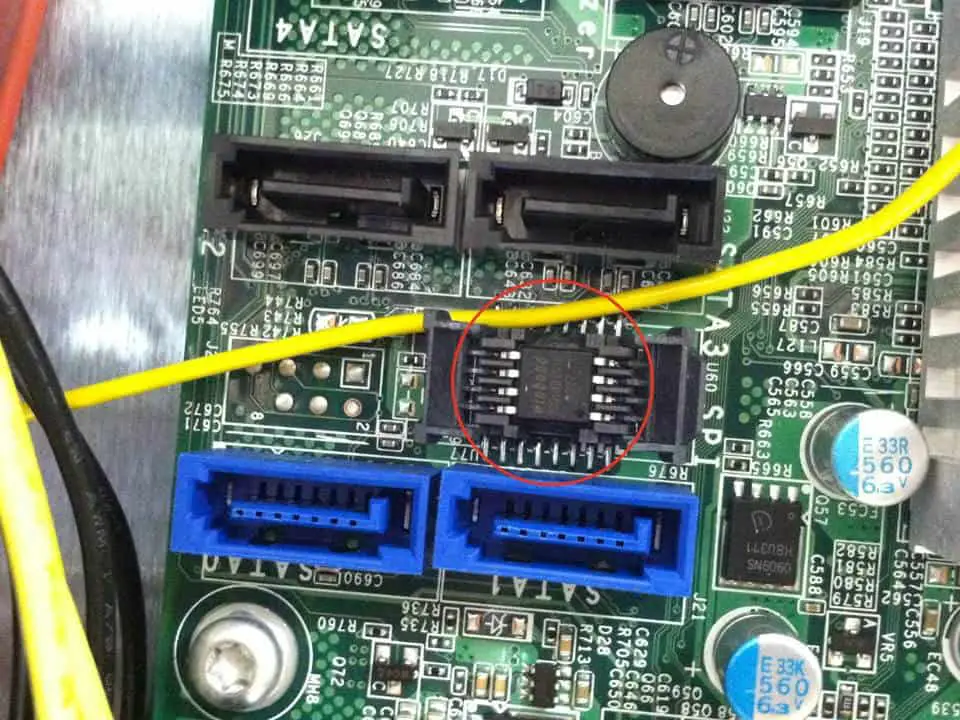
Modifying the BIOS settings is tricky, and it is different for each type of motherboards and BIOS. By default, the latest computers come with VT-x enabled, but if you have an older type computer, then you must enable it manually. I highly recommend checking the manual or online guide of your motherboard vendor before proceeding further.
All the latest processors and motherboards support virtualization technology (vt-x/AMD-v). If you have an old PC, double-check the processor model for this feature. Before changing the settings in BIOS, use the appropriate tools to detect the current VT-X status from OS level. If it’s already enabled (detected by these tools), then no changes required in BIOS.
Enable Virtualization in BIOS
It can be found under ‘Advanced Chipset settings’ in AWARD BIOS. Normally these vt-x/AMD-v extension settings will be available in advanced settings on most of the motherboards.
After you have changed the settings to disable or enable, it’s recommended to shut down the computer for a minimum of 10 seconds and restart it (Cold Restart) to take effect. Latest motherboards automatically detect these changes and do the cold restart. Whenever I change VT setting in my motherboard, it delays the next restart automatically.
Check Virtualization Technology (vt-x/AMD-v) from Windows 10
1) If your processor is made by Intel, use this free utility to see the result.
Download Intel virtualization technology detection tool here.
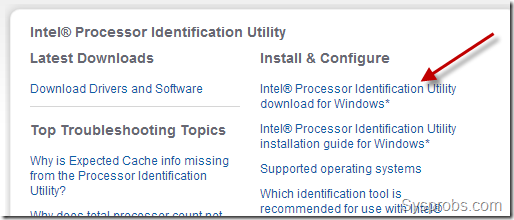
Once the utility is installed on the Windows 10 computer, you can use and identify the status as shown below.
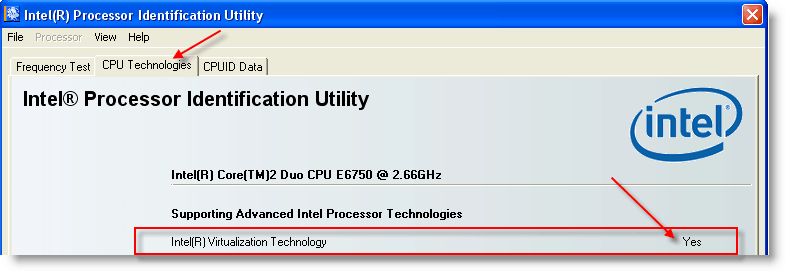
2) To check the status of AMD-V, AMD users can download AMD-V detection utility here.
3) There is a tool available from Microsoft which will work on both Intel and AMD processor Windows OS computers.
Download Microsoft Hardware-Assisted Virtualization Detection Tool from the official site here.
This tool doesn’t work on Windows 8, obviously, if you are using Windows 8, then vt-x/AMD-v has already enabled on that PC. That is the reason we can’t install this tool on Windows 8 or Windows 10 on it.
Installation is not required here, execute the EXE file and the following result will appear.
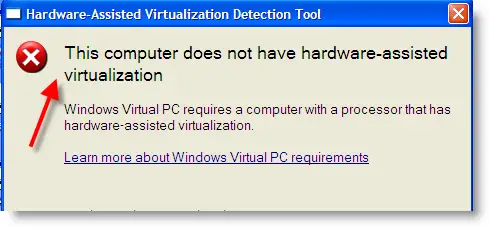
Note: CPU-Z is another good processor utility that can give lots of details about a processor. We have mentioned about it here.
One of these above tools will help you to identify vt-x/AMD-v support on your laptop or desktop computer.
Here is the short video:
How to Fix vt-x is disabled in the BIOS for All CPU modes (verr_vmx_msr_all_vmx_disabled) – VirtualBox
You may get vt-x is disabled in the bios for all CPU modes (verr_vmx_msr_all_vmx_disabled) error when you switch on a VirtualBox virtual machine on Windows or Linux host computers. One of the main reason for this error is disabled vt-x on your host computer.
Here are the few solutions
- Make sure that your computer motherboard and processor support hardware virtualization (VT-x) technology which we discussed here. Also, it should be enabled as described in this guide.
- PAE and NX are not enabled in the BIOS. These features are like VT-x. These additional processor features should be enabled.
- If you have installed Microsoft Hyper-V virtualization software, it may prevent the VirtualBox to read the hardware virtualization technology of the processor. You may need to uninstall Hyper-V to make Oracle VirtualBox work properly on Windows computer.
- If all the above are correct, but still getting the same error message, you need to increase the RAM of the virtual machine. Also, check any 3rd party software such as antivirus which may interfere with the VT-x of the computer. So, the VirtualBox is not detecting it properly. I’m sure one of the above solutions will work.
Read Also: Top 10 Intel 10th Gen Processor Laptops
So, if VT-x is disabled in the BIOS, you should know where to locate and enable virtualization in BIOS. If you use Hyper-v hypervisor on your desktop computer, make sure that Intel VT-x or AMD-V is enabled. If you do not see this option in your motherboard, you must check the motherboard manual and specifications to identify whether the motherboard supports virtualization technology. Some of the old motherboards on desktop or laptop do not offer this feature.

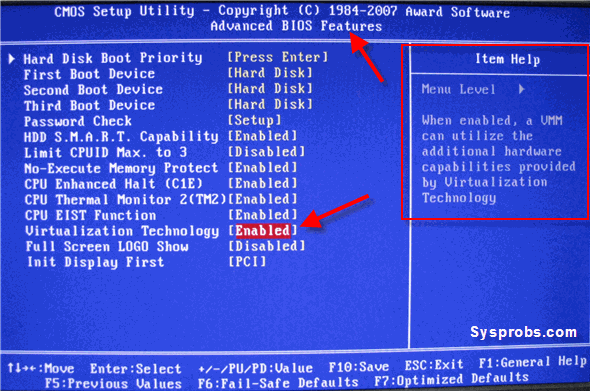





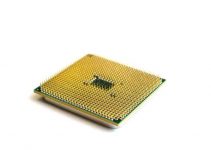

intel (r) pentium 4 3.40 GHZ with sse2 ,sse3
support VT?
mY BIOS IS AWARD
In my asus p5k-se the Virtualization technology is in Advanced CPU settings and it is called Vanderpool Technology.
Mine is a Pentium 4 as well 3.39 GHZ model 550 does not support vt-x
i have intel dual core processor and how do i enable hardware virtualization and hardware acceleration for virtual box running windows 8.
dual cpu e2160 @1.8.ghz
bios ; 18;22;22 ver. 08.00.13
Hi
Thanks for notifying. I have corrected.
I have acer aspire 4745G and I tried looking on the bios where to disable Intel Hardware Virtualization and I can’t locate it. Anyone has idea where or how to disable it? Thanks in advance.
laptop me vaio cw1kgx/u and enable virtualization Technology.
and check hardware virtualization Technology…
but inestall win server2008 64bit and check sys don`t win 2008 64bit/
I have Intel Core i5 3.3 GHz Computer with 8 gb ram and have vmware player 4
The Intel tool shows hardware virtualization is enabled but I was able to open the Apple OS virtual machine with out any problem without having to disable hardware virtualization
This is my first time i visit here. I found so many interesting stuff in your blog especially its discussion. From the tons of comments on your articles,
I have a Samsung Laptop running Windows 8 Single Language Edition
Rating: 4.0 Windows Experience Index
Processor: Intel(R) Pentium (R) CPU B970 @2.30GHz, Installed Memory: 2,00 GB (1.71 GB usable)
System Type: 64-bit Operating Systems, x64-based processor
I have Windows 2012 ISO Installed, when I try to add Hyper-V as a Feature on sever manager it gives me the below error:
Hyper-V cannot be installed. the processor does not have required virtualisation capabilities.
When I get to my BIOS settings I don’t have Virtualisation option to enable, Is there anything I can do for my machine to support Virtual? Please assist
Special thanks for your helpful article.
For the record, the Intel processor identification Utility for windows, I think it only conveys whether the processor supports the Intel virtualization technology, rather than stating whether that feature is enabled.
The first time I read your article, I mistakenly expected the Intel I.D. utility to show whether v-tx was enabled.
After booting into my BIOS, I was able to directly observe that v-tx was disabled.
Hi there,
I have DELL XPS 15 with Intel(R) Core(TM) i7 740QM CPU @ 1.73 GHz and want to upgrade the CPU only for better performance, Can you please suggest with in same chipset which processor i can upgrade this with ?
Thanks in advance to suggest.
hai,,,i’m using hp pavilion g6,,,running os windows 8,,,in my lap i can’t able to boot for enabling the intel HAXM vt-x technology.. if i boot i have ERROR 501,(i also tried ADVANCED STARTUP it doen’t show the UEFI Fire Ware Settings).anyone can help how to enable VT-X in my lap. :'(
hey. my virtual tech in bios is inacessible. i cant even change it to enable state. how that happen? please help.
HI,
I can see the Virtualization Technology line in my BIOS, but I can’t access it. The line marker doesn’t move to it…
What can I do ?
comment activer mon vt-x sur mon toshiba? quand je vais sur mon bios, c’est mis virtualisation desactiver or cela m’empeche de creer un serveur et des clients sur mon toshiba
hi, I have MSI all-in-one core i3 AE2081G, I want to run server2008 R2 in VMware, but it said your system dosen’t support VT. In BIOS there is no option for enabling VT. I run the software u introduce, but it said your system support VT!!!!
what shall I do? how can I active VT?
I suggest you to check MSI website for this problem.
Ask them about your problem, they will surely can help u about their device.
any question left contact me with my E-mail address : mft_iran@live.com
hi All,
i have a computer with hyper v operating system, if i change enable or disable feature intel virtualization and VT-D Tech on BIOS, when i try to restrart the machine, my machine become BSOD.
please advice..
thanks
how to enable hardwarevirtualization in intel pentium (R) dual- core E5200
Hi,
Which is better: VirtualBox or VMware player?
Regards,
Kiran
VMware Certified Associate
Thanks!!!
pfft shadow ram of old.. ah yes amiga has no need of this arcane 1947 tech. ah x86 ..true 8bit .you fell for it congrats
why??intel(R) virtualization Technology no
intel(R) Hyper-threading Technology no
hooooooooo beautiful article very very useful thanks a lot
Very good and effective article!!!